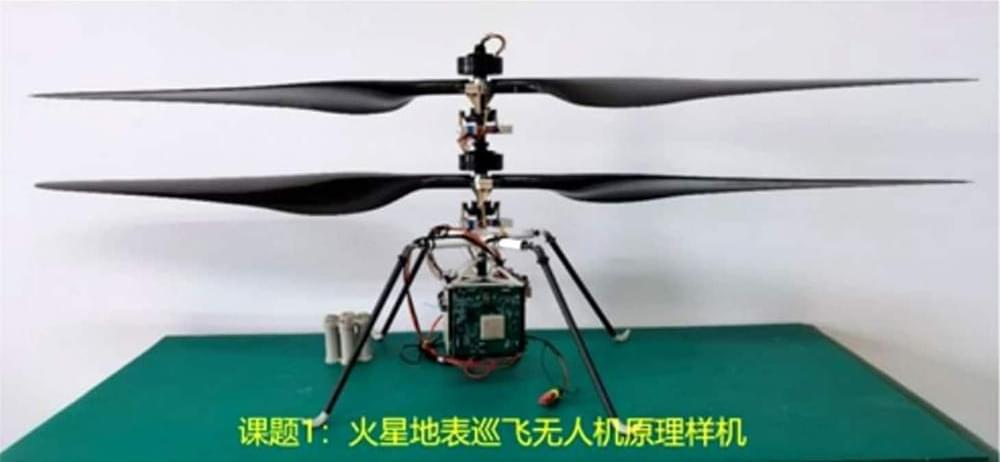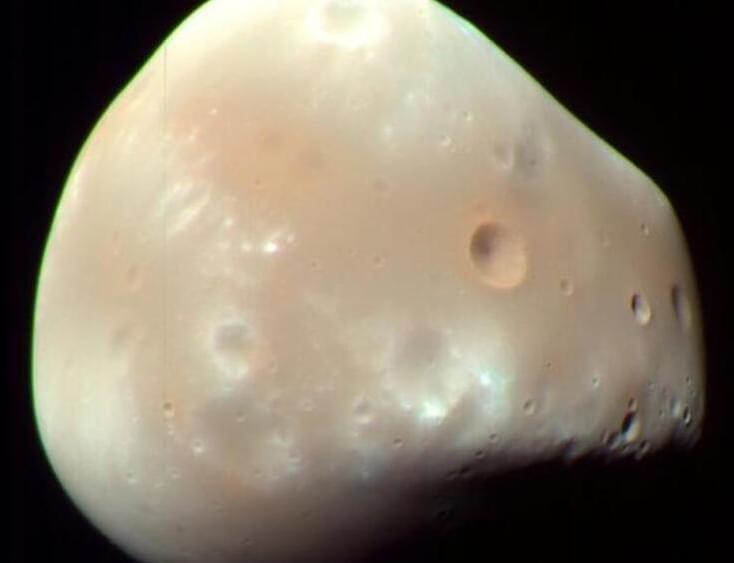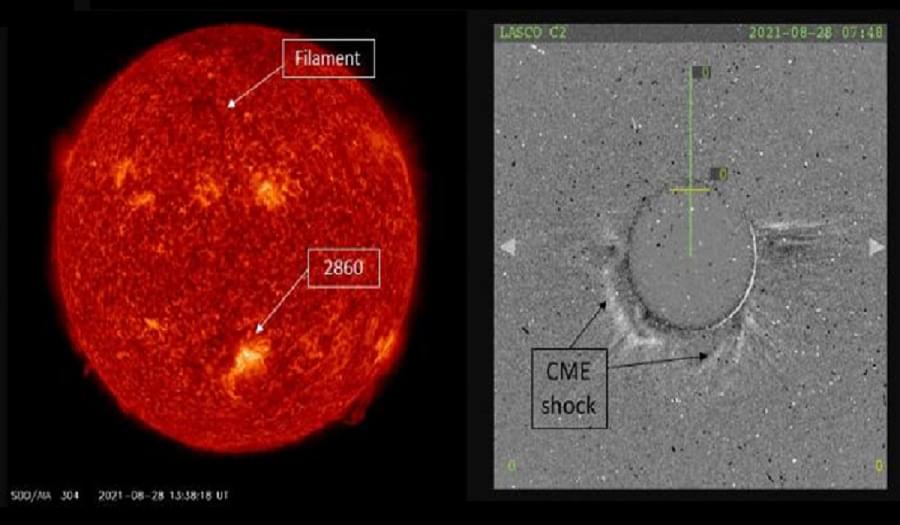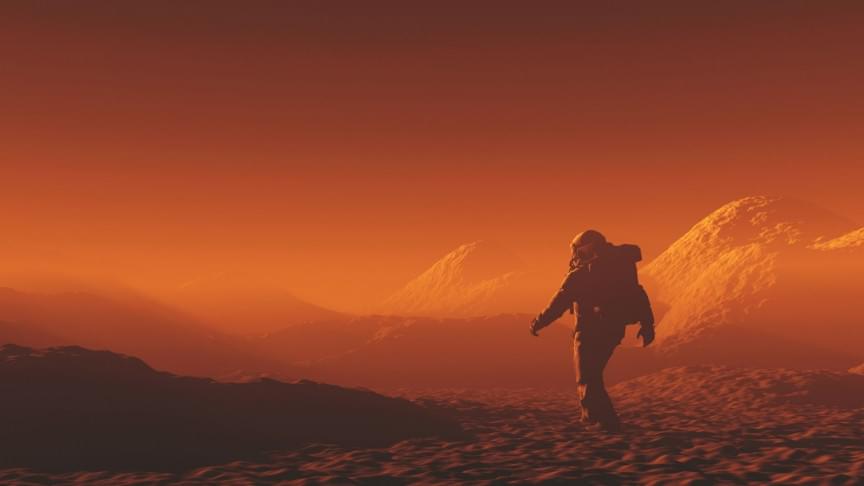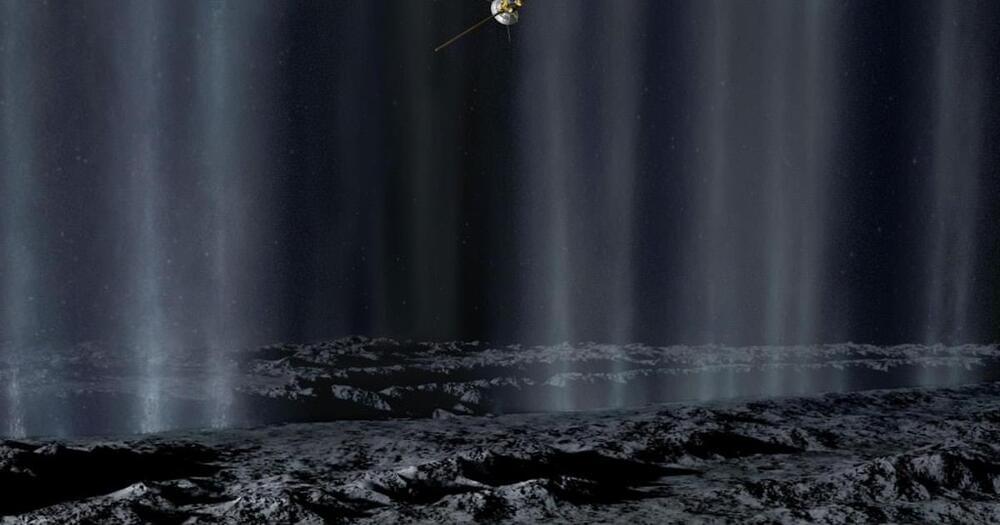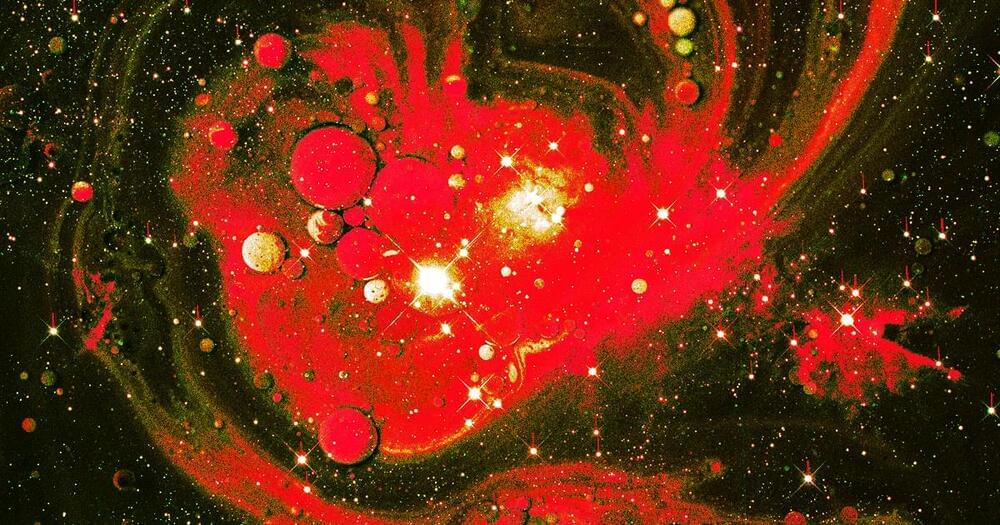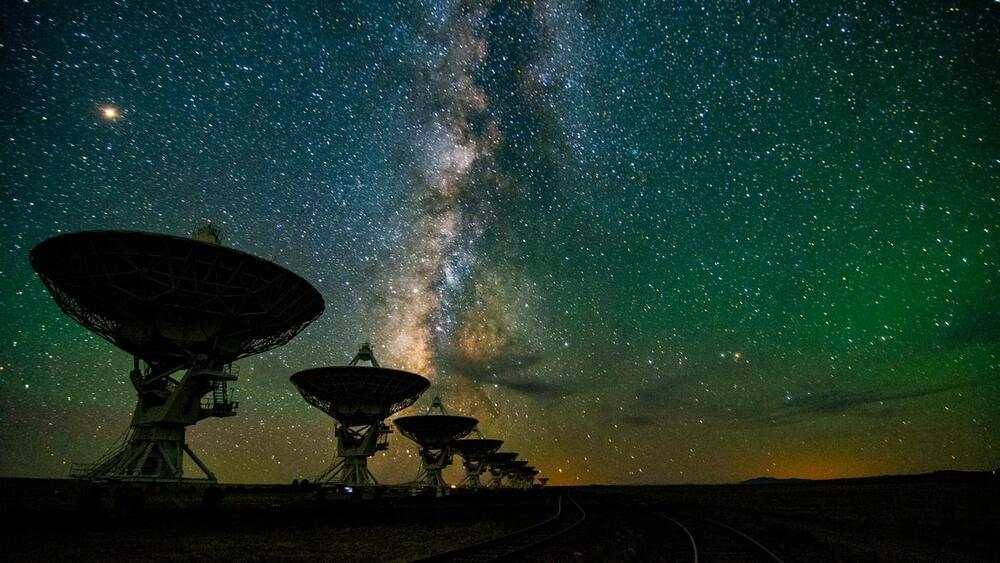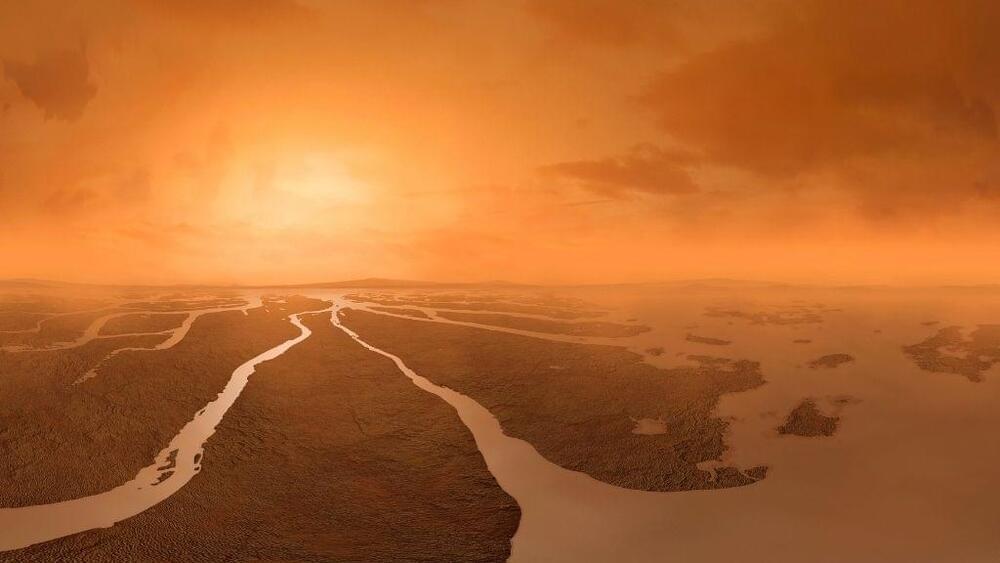China has shown off the prototype of its “Mars cruise drone” designed for surveillance work on future Mars missions, following the historic landing of a robotic rover on the Red Planet a few months ago.
The prototype of the miniature helicopter successfully passed the final acceptance, China’s National Space Science Center (CNNSC) announced on Wednesday. In the images shared by the science center, the prototype looks similar in appearance to NASA’s Ingenuity helicopter, developed for its Perseverance mission this year.
The Chinese prototype sports two rotor blades, a sensor-and-camera base, and four thin legs, but there is no solar panel at the top like Ingenuity.
